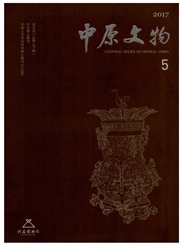

 中文摘要:
中文摘要:
从考古发掘的地下材料可知,长江中下游地区烧砖的发展经历了如下阶段:距今约6300~5500年前,出现了用于修建祭祀场所、陶窑、铺垫坑底、建筑房屋基础及柱础的形状不规则的烧砖,这是世界上最早的烧砖;距今约5500~5000年前,烧砖形状初步规则,其用途扩展至筑墙、砌井壁、铺垫道路及房屋地面,这与石灰、水泥性能材料的发明相适应,是建筑史上的重要里程碑;距今约5000~2600年前,烧砖的形状趋于规整,烧制工艺趋于成熟;距今约2600年左右,烧砖形状及工艺完全成熟。
 英文摘要:
英文摘要:
Through archaeological excavation of the underground materials and literatures, We think that the development of brick in the middle and lower reaches of the Yangtze river region has experienced the fol- lowing stages : About 6.3- 5.5 ka BP, appeared for the construction of worship places, pottery kiln, bedding bottom, building foundation and base of the irregular shape of brick, it is the oldest in the world bricks ; About 5.5 - 5 ka BP, the shape of primary rules, its use is extended to the wall, masonry wall, paving the way and building the ground brick, lime and cement properties of materials, the invention adapts, is an important mile- post in the history of architecture ; About 5 - 2.6 ka BP, brick shape became more regular, firing process tends to mature; About 2.6 ka BP and beyond, the brick shape and Making technology fully mature.
 同期刊论文项目
同期刊论文项目
 同项目期刊论文
同项目期刊论文
 期刊信息
期刊信息
